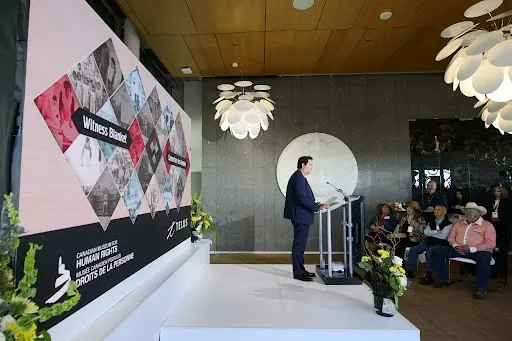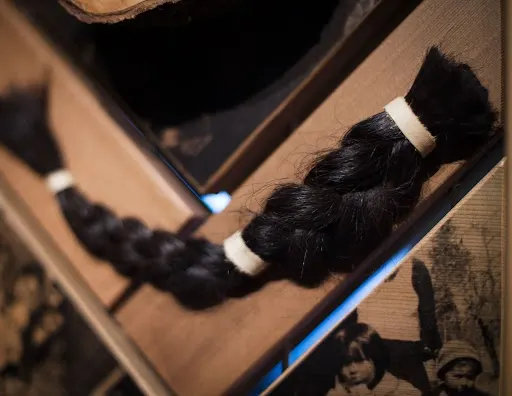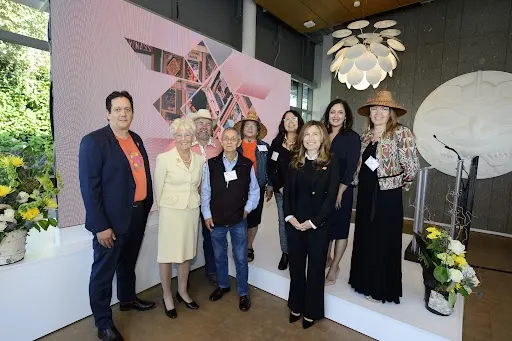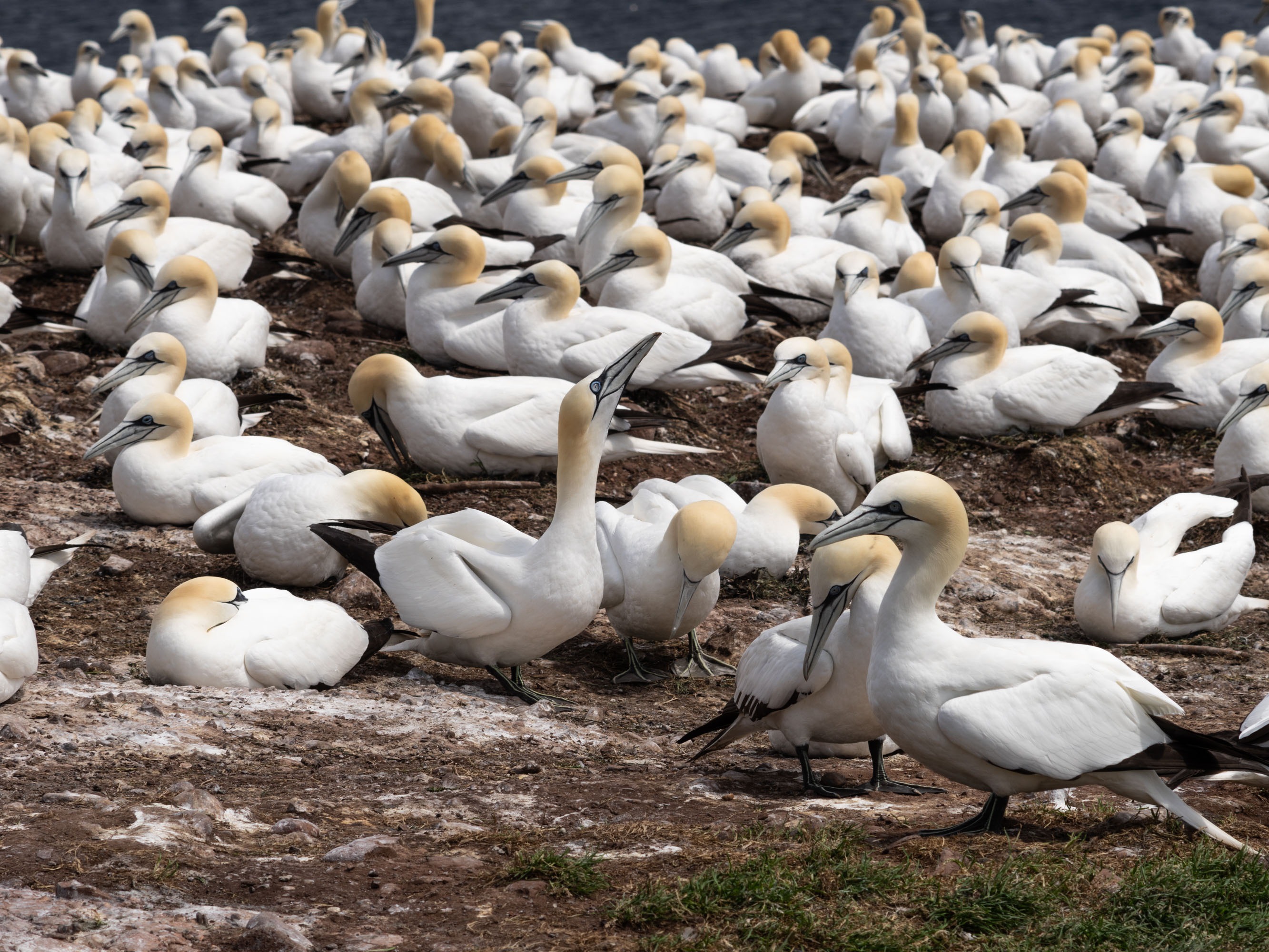
Connecting Canadians
Digitized Witness Blanket invites more Canadians to bear witness to painful legacy
Oct 28, 2022
There’s a collapsible stool that sits in Carey Newman’s living room on Vancouver Island, made from various pieces of wood joined together, like a folding director’s chair. It was a Christmas gift from his parents.
It’s also the object that sparked the idea forthe Witness Blanket, Newman’s monumental artwork he created to honour Survivors of Canada’s residential school system.
“I wanted to make something that could tell the truth about residential schoolsthrough art that was more universal than, say, making a totem about my dad or my family’s experience,” recalls Newman, a master carver and artist of Kwakwaka'wakw, Coast Salish and settler heritage. “At first, I was thinking about getting a brick from every school, and the idea slowly developed into bringing togetherdifferent objectsfrom Survivors, and all of the communities that have been affected by residential schools.”
Newman wasn’t quite sure how it would all come together until his eyes landed on the stool his feet were resting on. “I saw those little pieces of wood, all strung together, connected by a metal rod and I thought, ‘What if I made that, but out of all those items from Survivors?’”
In time, the idea grew into the Witness Blanket: a large-scale installation made up of several panels“woven” from more than 800 objects – from a broken statue of an angel found in the burned-out wreckage of a residential school in Alberta toa pair of skates from Saskatchewan that symbolize the way European values were forced on Indigenous children while their own traditions were brutally suppressed.
It’s a journey that took Newman and his team over 200,000 kilometres, meeting 10,000 people along the way and becoming custodian to thousands of relics of a painful (and ongoing) legacy. In all, items were collected from 77 different communities, many donated by Survivors themselves.
The Witness Blanket also contains items of particular meaning for Newman, whose father is a residential-school Survivor.
“The tree branch, because it was the thing I knew I was going to make my own contribution,” he says, referring to the piece he cut from an apple tree on the site of a residential school his father, Victor Newman, had been forced to attend in Mission, B.C. It represents one of the few memories the artist’s father shared with his children from that time in his life – when he was caught drinking communion wine and took the sole blame so his friends wouldn’t be punished.
Two braids, donated by his sister as part of reclaiming the cultural practice of cutting your hair in mourning, also hold special significance, given that many children in this system had their long hair abruptly shorn off against their will.
“Those are part of the same story, because my father told us about getting caught stealing wine, but he also told us about the day he had his hair cut, that first day of school.”

Indigenous voices and experiences
Since its initial creation in 2014, funded by a commemorative initiative launched by the Truth and Reconciliation Commission, the Witness Blanket has toured extensively; it’s alsobeen reproduced so that more people can experience it in person, and it is the subject of both a book and a documentary.
Now, with a $1-million leadership commitment from TELUS and the TELUS Friendly Future Foundation, and a $100,000 gift from the Entwistle Family Foundation, this project is also available as a digital experience – an immersive mix of images, video, text and interviews with Survivors, telling the story of a selection of objects from the original Witness Blanket. The platform,
witnessblanket.ca
, is now available to the public in honour of the National Day for Truth and Reconciliation.Canada needs better digital policies to harness the power of connectivity for Canadians. Be part of the solution.
Supported by TELUS, the digital Witness Blanket project was created in partnership with Winnipeg's Canadian Museum for Human Rights (CMHR), which is a co-steward of the original artwork with Newman.
“Our partnership with Carey Newman and the Canadian Museum for Human Rights to use innovation and technology to promote, distribute and expand the reach of the stories in the Witness Blanket is a powerful example of how businesses can play a meaningful role in amplifying the voices and experiences of Indigenous Peoples,” says Jill Schnarr, chief social innovation and communications officer at TELUS. “It is our collective mission to ensure the digital Witness Blanket project will have a lasting and profound impression on every Canadian and serve to inspire for-profit organizations to work within Indigenous-led frameworks of Reconciliation.”
For Lise Pinkos, CMHR’s director of programs, the digital experience is a natural extension of the museum’s commitment to have as many people as possible experience the truths shared by theresidential-schoolSurvivors.
“It really allows us to show the impact of these institutions, break some myths down for Canadians and share the perspectives of Survivors,” she says. “For me, it’s the ‘truth’ part of ‘Truth and Reconciliation,’ and hearing those voices is essential to encountering the truth.”
The digital experience has a “safe space” escape button on every story, designed for anyone who might find the content triggering.

Listen, learn and share
According to Pinkos, there are still “biases and misconceptions” in Canadian society about the residential school system that, as she phrases it, “impede our collective reckoning of history.”
Oneobject that reallyresonates with her is the mush hole bowl, a plastic bowl used every day by the children forced to attend the Mohawk Institute in Ontario, named after the “mushy” porridge they ate. In this cruel system, it was not unusual for children to be constantly hungry and frequently served spoiled food.
“Maybe it’s because I have young children who are always eating, because growing kids need to eat,” says Pinkos. “It’s also an example of how the government and the institutions that ran these schools did not care about these children. I’ve spoken to Survivors about the long-term trauma of being malnourished, or being given rotten food. There are so many things they’re still not able to eat to this day.”
This object also represents the pain of having your traditional foods taken from you.
“One of the most precious possessions I have is a recipe from my grandma, who has passed away,” Pinkos adds. “Those are the things that are passed down through generations, and cutting those ties was such a deliberate way of trying to eliminate Indigenous Peoples from Canadian society.”
The ultimate goal of the Witness Blanket, whether physical or digital, is to encourage viewers to bear witness to the truths it contains.
“We come from an oral tradition, where when we tell our stories or we make commitments; we do that in words, or we record them in art,” explains Newman. “But in our ceremonies, we call witnesses, and we ask them to reflect back on what they heard.”
As a witness, he says, you have a responsibility to listen, to learn – and to share what you have found out. The digitization of this artwork enables more people to become witnesses, with the ability to literally “share” what is learned as a link in a text or social media post.
“It becomes an outward-looking thing, where people share it out on different platforms with their networks,” he says, emphasizing the way the digital experience keeps the same powerful element of self-discovery the original possesses, allowing viewers to linger as long as they like in front of the objects. (In fact, Pinkos recommends viewers approach it in pieces, perhaps even just one object at a sitting.)
“History becomes personal,” says Newman. “Because there are so many objects, if you spend enough time you’ll see something that carries a memory for you, which switches it from something you’re looking at to something you’re feeling.”
And, he adds, “as soon as we feel something – then it’s important.”

Meet the author
GLOBE CONTENT STUDIO
Author


